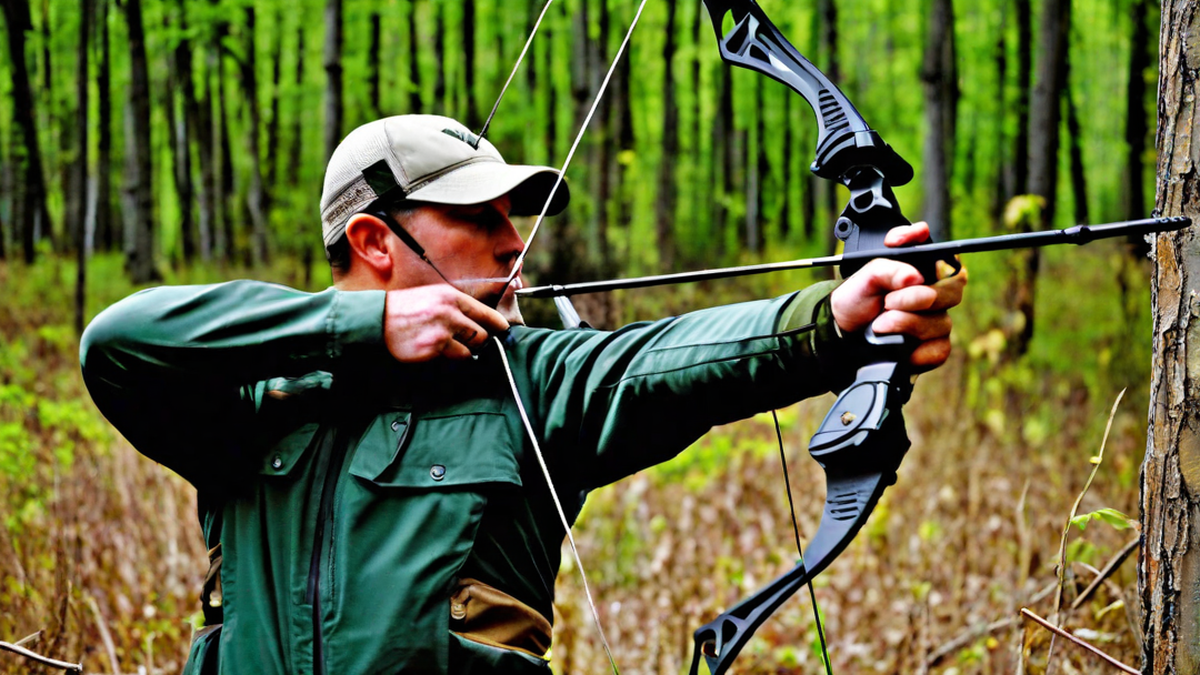When it comes to hunting, choosing the right bow is crucial. It’s not just about finding a bow that suits your style and preferences, but also one that matches your skill level and the type of game you’ll be hunting. As an avid hunter myself, I’ve spent countless hours researching and trying out different bows, and I’m here to share my knowledge and personal experiences to help you find the perfect bow for your hunting adventures.
Understanding Your Hunting Style
Before diving into the world of bows, it’s important to understand your own hunting style. Are you a ground blind hunter, a tree stand enthusiast, or do you prefer stalking and spot-and-stalk hunting? Each style requires a different set of features in a bow.
For ground blind hunting, you’ll want a bow that is compact and maneuverable, allowing you to easily move and draw your bow within the confines of the blind. A shorter axle-to-axle length will be beneficial in this situation. On the other hand, if you’re a tree stand hunter, a longer bow with a higher brace height might be more suitable for stability and accuracy during longer shots.
If you enjoy spot-and-stalk hunting, a lightweight bow will be your best friend. You’ll appreciate a bow that won’t weigh you down as you cover miles of rugged terrain in search of your prey. Additionally, a shorter bow will be easier to handle in tight spaces and thick brush.
Determining Your Draw Length and Draw Weight
Once you have an idea of your hunting style, it’s time to determine your draw length and draw weight. Your draw length is the distance from the bowstring at full draw to the front of the bow grip. It’s important to have a bow with the correct draw length to achieve optimal accuracy and consistency.
There are several methods to measure your draw length, but the most accurate way is to visit a professional archery shop and have them measure it for you. They have the tools and knowledge to ensure an accurate measurement.
As for draw weight, it’s important to choose a bow that you can comfortably draw and hold at full draw without straining. For hunting purposes, a draw weight of 40-70 pounds is typically recommended. However, it’s important to note that the higher the draw weight, the faster the arrow will travel and the more kinetic energy it will possess. This can be beneficial when hunting larger game.
Bow Types and Features
Now let’s dive into the different types of bows and the features to consider:
- Recurve Bows: Recurve bows are known for their simplicity and elegance. They have a traditional design and are favored by many traditional archers and bowhunters. They are also relatively lightweight and easy to maneuver. However, they require more skill to shoot accurately compared to compound bows.
- Compound Bows: Compound bows are the most popular choice among hunters due to their modern technology and high accuracy. They feature a system of cams and cables that provide a let-off at full draw, making it easier to hold and aim. They also offer adjustable draw weights and lengths, making them versatile for hunters of all skill levels.
- Crossbows: Crossbows are a great option for hunters with limited mobility or those who prefer a more rifle-like hunting experience. They are easier to shoot accurately and require less physical strength to operate. However, they are typically heavier and bulkier than recurve or compound bows.
In addition to the bow type, there are several features to consider:
- Brace Height: The brace height refers to the distance between the bowstring and the bow grip when the bow is at rest. A shorter brace height typically results in faster arrow speeds, but it also requires more shooting skill and forgiveness.
- Axle-to-Axle Length: The axle-to-axle length is the distance between the two axles of the bow. A shorter axle-to-axle length offers increased maneuverability, while a longer length provides more stability and forgiveness.
- Cam System: Compound bows utilize different types of cam systems, including single cam, hybrid cam, and binary cam. Each cam system has its own advantages, such as smoother draw cycles, increased speed, or improved accuracy.
- Grip: The grip of the bow is often overlooked, but it plays a significant role in your shooting comfort and consistency. Make sure to choose a grip that feels comfortable and allows for a consistent hand placement.
Personal Recommendation: {Bow Brand}
After trying out various bows and considering my hunting style, I have found {Bow Brand} to be the perfect fit for me. Their compound bows offer a combination of speed, accuracy, and adjustability that allows me to take on any hunting situation with confidence. The comfortable grip and smooth draw cycle of their bows make shooting a pleasure.
But remember, what works for me might not work for everyone. It’s important to visit an archery shop and try out different bows to see which one feels most comfortable and suits your individual needs.
Conclusion
Choosing the right bow for hunting is an important decision that can greatly impact your hunting experience. Consider your hunting style, determine your draw length and draw weight, and explore the different types of bows and features available. Don’t be afraid to seek guidance from professionals and take the time to try out different bows before making a final decision.
Remember, finding the perfect bow is an exciting journey that can greatly enhance your hunting adventures. Happy hunting!
